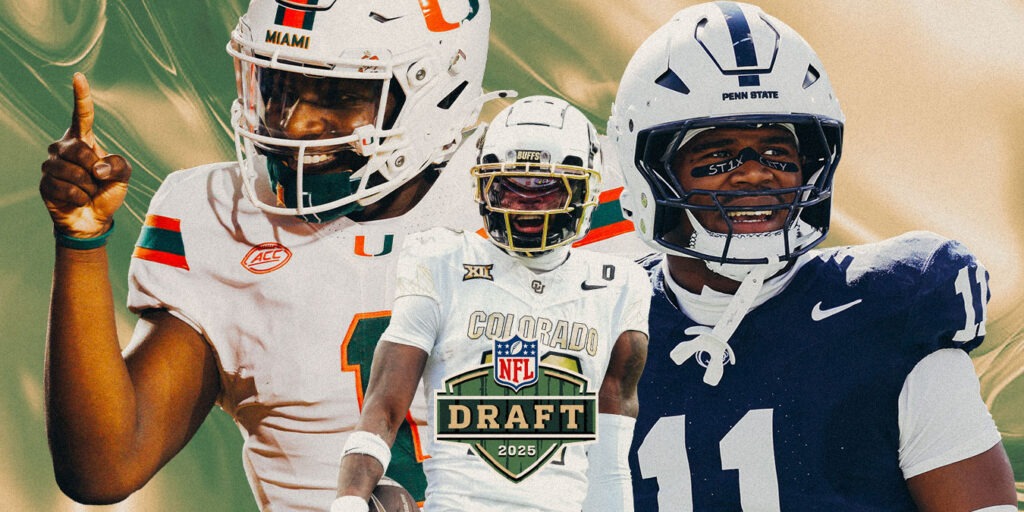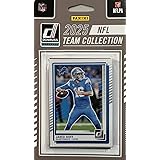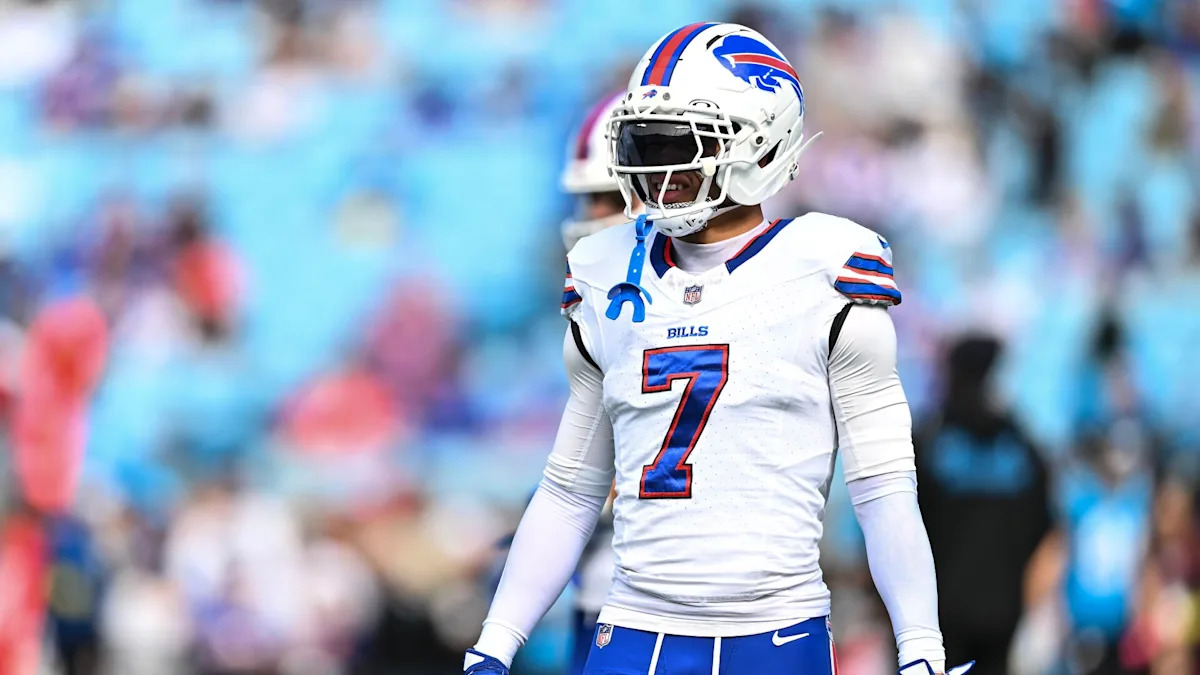
Unlocking the Secrets of NFL Dominance: How ELO Ratings are Revolutionizing the Game
In the grand scheme of things, football isn’t just a group of oversized men running into each other like a high-stakes game of crash and bash. Nope, there’s an art—a strategy, if you will—and at the core of this sport lies the duel between the pass rusher and the quarterback. Ah, but how do we divine the prowess of said pass rusher, let alone the one and only Myles Garrett?
Now, before we dive into Garrett’s prowess, let’s acknowledge the elephant in the room—because indeed, there’s a precedent for such: Garrett, the man known to make offensive linemen look like they’re trying to tackle a ghost, was on the market at the start of 2025. Or, at least, he made noises about wanting out. Imagine that, a trade request from the Cleveland Browns, a team that has seen more turmoil in quarterback situations than a reality TV show! But in the end, Garrett settled with them, not venturing away from the cozy comforts of Cleveland.
Oh, he’s got accolades enough to wallpaper his mansion: four-time All-Pro, NFL Defensive Player of the Year… but, as they say, numbers speak louder than accolades, especially for those looking beyond the flashy titles.
My sports analytics hat on, I tell you that raw stats only tell you so much. Sure, Garrett’s got a 1-on-1 win rate that’d make lesser pass rushers green with envy (63%!). But when you have an ELO rating system, things get more interesting.
This model calculates expected value in mor e nuanced ways than just saying “Gee, Garrett’s pretty good.” For instance, during a head-to-head with a fellow defensive end like Aidan Hutchinson, you see the literal application of “strength-to-strength” testing, comparing ELO ratings to predict matchup outcomes.
And speaking of predictions, Garrett’s near-untouchable ELO of 1689 showcases his dominance. You’d have to be named Rashawn Slater, Tristan Wirfs, or Christian Darrisaw to even think of tussling with him successfully more than half the time. But wasn’t it just his performance against the Giants in Week 3 of 2024 that gives us insight into how foe’s tackle him?
Now taking our NFL shores, this ELO system also gives out NFL team ratings which, mind you, extend from the prowess of one individual’s matchup percentages to aggregated team performance.
Adjusting for opposition, the method we’ve honed through careful calculation and whittling of matchup data–sure to give even the most laid-back fan a reason to nerd out–provides a clearer picture of player and team worth.
While Garrett’s impact on the Browns’ defense was evident (they’d drop like a rock in our ratings should he be removed), it’s the nuance in these ratings that truly showcases the symphony of stats and victories.
Enough. So, how do we evaluate the real worth of not just a player like Garrett or Hutchinson, but for the entire NFL? Perhaps it’s time to delve deeper, analyze further, and maybe even cheer, just a tad, for the numbers nerds behind the spectacle. After all—there’s beauty in the digits, isn’t there?
Now, I could tell you more—much more—but hey, why not go straight to the horse’s mouth? Find out how we calculate NFL ELO ratings and how they could influence a team’s future plays. LEARN MORE
And as we ponder the mathematical makings of football prowess, don’t forget to follow us on PLACEHOLDER10a37cf427f81b3d, PLACEHOLDER6446f95971f2eabf, PLACEHOLDER81ea9143c0e16cbf, and PLACEHOLDERa3e142ff269809be to keep abreast with football analytics that could, just might, redefine your understanding of the gridiron.
Now, that said, go check out the original article here and have it rolled into your, our, collective pursuit for gridiron glory—mathematically. After all, in the sports world, we’re all looking to quantify greatness in its purest numeric form. LEARN MORE.
Weâve charted and calculated 1-on-1 matchup win percentages and used the data to create our own version of NFL ELO ratings that are adjusted based on strength of competition.
How good of a pass rusher is Myles Garrett? And how would acquiring someone like Garrett change the trajectory of a team?
That was the question being asked early in 2025 when the superstar edge rusher announced heâs made a trade request from the Cleveland Browns.
After all, itâs not every day a four-time All-Pro and NFL Defensive Player of the Year becomes available. However, accolades and reputation often say one thing about a player while the data indicates something else.
Garrett ended up not being traded, instead agreeing to a four-year extension averaging $40 million per year. His reported $122.8 million guaranteed also became the most for a non-quarterback in league history.
But in an attempt to quantify Garrettâs ability, we used our method of evaluating pass rushers through tracking true 1-on-1 matchups between a pass rusher and pass blocker. That does not include stunts and twists or scheme cross-ups. Instead, what we look for is situations in which a pass blocker and a pass rusher are both aware of who they are matched up against and who they need to beat.
Garrett finished the 2024 regular season with a 1-on-1 win rate of 63%. How good is that? The average edge rusher in the NFL wins about 26% of the time. Thereâs more to the story, though. Win rate alone isnât enough.
So how do you adjust for strength of competition when attempting to describe a pass rushers true ability, rather than describing historical performance? Enter our NFL ELO ratings.
Our ELO model (we also have a college football version) assigns a rating to each player. At the beginning of a data set, every player has the same rating. Based on these ratings, each 1-on-1 matchup has an expected result. If two players have the same rating, each is expected to win 50% of the time. If thereâs a 100-point difference in the ratings, the higher player is expected to win about 64% of the time.
Aidan Hutchinson of the Detroit Lions had a higher win rate in 2024 before getting hurt, and his rate was buoyed by a Week 1 matchup against the third-string tackles of the Los Angeles Rams.
Rams tackle A.J. Arcuri has an ELO rating of around 1200 and Hutchinsonâs is 1600. A 400-point difference means that we expect Hutchinson to win about 90% of the time. If Hutchinson had been facing Rashawn Slater instead, we would have expected him to only win about 30% of his matchups.
A new rating is calculated after each matchup based on how a player performed versus expected. If you are expected to win 90% of the time and you win, your rating goes up, but not by much. If youâre expected to win 30% of the time and you win, you get a much-larger ratings increase. This is why looking only at win rate can be misleading. A player who wins 3 of 8 matchups against Slater had a better performance than a player who wins 7 of 8 against a typical third-string tackle.
What was Garrettâs ELO rating? After the 2024 season, it was 1689, which was 80 points better than Micah Parsons of the Dallas Cowboys in second. Only three left tackles in the NFL (Slater, Tristan Wirfs of the Tampa Bay Buccaneers and Christian Darrisaw of the Minnesota Vikings) were expected to beat Garrett more than half the time.
Highest Post-2024 Season ELO Ratings Among Defensive Ends

The average starting left tackle in the NFL had an ELO around 1550, so lining him up and expecting him to block Garrett 1-on-1 would be, well, a bad idea. Garrett was expected to win that matchup 70% of the time, and that is not conducive to a functional offense.
In Week 3 of the 2024 season against the New York Giants, Garrett had 15 1-on-1 matchups with left tackle Andrew Thomas. Thomas was considered to be one of the NFLâs best left tackles, and our numbers bear that out. He finished the season as the 10th-best pass blocking left tackle in the league and an ELO of 1575.
In that game, Garrett won 8 of 15 matchups, or 53%. At the time of the game, the two players had nearly identical ELO ratings. Thomasâ was slightly higher and coming into the game we would have expected Garrett to win about 48% of the time. He overperformed, but only by a little.
All this is to say that Garrett was so good that for Thomas, winning half his 1-on-1s against him in Week 3 was actually a pretty good performance.
We also used this method to evaluate wideouts through tracking matchups between a receiver and defensive back when assessing which teams would benefit most from acquiring Cooper Kupp from the Los Angeles Rams.
In that case, our ELO model assigns a rating to each receiver, accounting for both ELO against zone and man defense. Again, at the beginning of a data set, every player has the same rating. Based on these ratings, each matchup has an expected result. If two players have the same rating, each is expected to win 50% of the time. If thereâs a 100-point difference in the ratings, the higher player is expected to win about 64% of the time.
The Washington Commanders, for example, did not have a true target-sucking option at the time, so putting Kupp on the roster would have given him an assumed target rate north of 33%. That would have potentially reduced some of the targets from WRs with higher ELO ratings.
Of course, any team could acquire Kupp and use him in a completely different way than heâs been previously used, but all we could do was take Kupp, statistically, and move him around to see which teams would get the biggest boost from acquiring him.
These also influence our NFL team ratings, which are based on seven aspects of each team: QB, pass block, run block, pass rush, run defense, skill players and pass coverage. Other than QB, each of these is built from individual player ratings, weighted by position, and aggregated to a unit rating.
Edge rushers are the highest weighted position when it comes to pass rush, accounting for around 52% of all 1-on-1s while interior defensive linemen are at about 36%.

With Garrett, for example, the Browns defense had the third-best pass-rushing unit heading into the 2025 offseason with a collective ELO of 1316. Only the Detroit Lions (1338) and Pittsburgh Steelers (1330) ranked higher. If we were to remove Garrett from the Browns, they would have fallen to the eighth-best unit at 1271.
That amounts to a 0.8-point dip (think of these like spread values) in our NFL team ratings. If we knew for certain that Garrett was going to stay healthy for the entire 2025 season, it would be a 1.3 drop.
For much more coverage, follow our social accounts on X, Threads, Bluesky and Facebook.
The post Leveling the Playing Field With Our NFL ELO Ratings appeared first on Opta Analyst.
































Post Comment